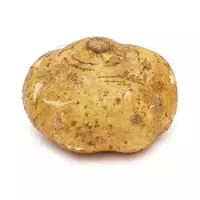Hikama

The plant Pachyrhizus cutout or Pachyrhizus erosus belongs to herbaceous vines according to the scientific classification assigned to the legume family. Most often, the plant is called nothing more than a hikama. The homeland of hikama is the territory of modern Mexico. In addition, in wildlife, hikama is found in other states of the South American region.
For thousands of years, hikama root crops have been eaten by the indigenous people of the region. Such a root crop as hikama was considered an integral part of the daily diet of the Aztec civilization. In the Era of Great Geographical Discoveries, the hikam root crop became known in Europe. The Spanish conquistadors actively penetrated deep into the American continent and got acquainted with the lifestyle, as well as food that the natives used in this territory for hundreds of years.
The first written references to such a root crop as hikama were found in the notes of the famous Pedro Ciesa de Leon, who, describing the food condition of modern Peru, mentioned rich harvests of edible tubers. The height of the hikama plant can reach 5 meters, and the length of the root is 2 meters. Often the mass of the hikama root reaches 20 kg. Impressive enough size for a root vegetable, isn't it.
The root vegetable of hikama is distinguished by its yellow color and the presence of a thin peel. The hikama pulp has a creamy white color, as well as a juicy and crispy consistency. Experts compare the taste, as well as the structure of the root crop with raw potatoes. Often, hikama is compared to pears, since sweet fruit notes are clearly caught in the taste of a mature root crop. Hikama is distinguished by a sweet aroma that resembles something apple. Root crops are eaten raw.
As a rule, the root vegetable is peeled and then diced, seasoned with salt, as well as red pepper, while using a dressing of lemon juice or lime. It is worth noting that often hikam root vegetable is used to make soups, as well as vitamin salads from fresh vegetables.
However, the root crop of hikam is famous not only for its taste and aromatic properties, as well as for its high content of various kinds of compounds useful for the human body. The chemical composition of hikama is replete with vitamins of groups A, B, C, E, also K and PP. In addition, such a root crop as hikama is enriched with selenium, zinc, potassium, magnesium, sodium, phosphorus, as well as calcium. In addition, hikama has a fairly low calorie content, which is 38 Kcal.
hikams 38 kKal
Energy value of hikama (Ratio of proteins, fats, carbohydrates - ju):
Proteins: 0.72 g (~ 3 kCal)
Fats: 0.09 g. (~ 1 kCal)
Carbohydrates: 8.82 g (~ 35 kCal)
Energy ratio (bj | y): 8% | 2% | 93%
 Español
Español Français
Français Português
Português Русский
Русский 简体中文
简体中文 繁體中文
繁體中文 日本語
日本語 한국어
한국어 العربية
العربية Türkçe
Türkçe Қазақ
Қазақ Deutsch
Deutsch Italiano
Italiano Українська
Українська
